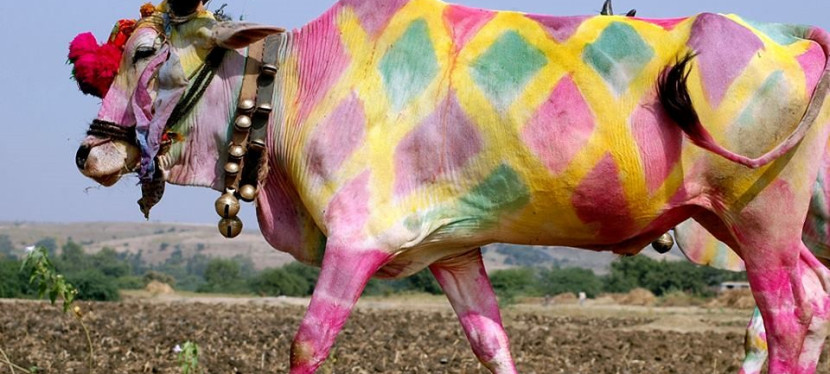Humans, Machines and Ecosystems: Can big data disrupt livestock development?
By Vanessa Meadu
How can big data approaches like artificial intelligence, machine learning and text mining help researchers generate insights that conventional data collection and analysis cannot? Members of the Livestock Data for Decision (D4D) Community of Practice attended the recent CGIAR Big Data in Agriculture Convention to gain new insights, share experience and connect with researchers and industry experts working on livestock, fish and crops.
This year’s Convention on the theme Trust: Humans, Machines & Ecosystems was hosted by The International Crops Research Institute for the Semi-Arid Tropics (ICRISAT) in Hyderabad, India. The booming city of Hyderabad, also known as Cyberabad, is a hotbed for the tech sector, and home to countless startups, innovators and disruptors. India, which is home to nearly 18% of the world’s population (and growing), faces very real food security challenges. It was an appropriate setting to explore potential solutions to feed the future—“byte by byte.”
The livestock data challenge
Closing livestock data gaps is a critical challenge and one of the “raisons d’être” of the LD4D Community. The livestock Community is working hard to understand essential facts such as the prevalence of livestock diseases, livestock mortality rates, the distribution of different species and the economic impacts of animal diseases. At the Convention, Community members had the opportunity to interact on a broad spectrum of big data initiatives underway across the agriculture sector, ones that might offer new inspiration for livestock research and interventions.

The author (center) with livestock development colleagues from India’s BAIF Development Research Foundation.
Inspiring innovations across the agri-food sector
We were intrigued by a demonstration of artificial intelligence for crop pest and disease forecasting. We also discovered a number of farmer-facing extension technologies, including SLAM! – a self-learning platform that uses farmer feedback and news items to improve the automatically generated advice to farmers based on simple agronomic models. While most of the work was related to crops but there is potential to adapt certain methodologies for the livestock sector, which has its own unique characteristics (crops stay still, cows don’t).
Another exciting initiative aims to increase knowledge of aquaculture disease through tools to rapidly identify fish pathogens, track their origin and manage their spread. The initiative combines a “lab-in-a-backpack” for pond-side DNA identification and quantification of pathogens with a bioinformatics software package that leverages supervised machine learning to identify fish pathogens using hidden Markov model (HMM) profiles. This project received an Inspire Challenge award at this year’s Convention.
What’s in a name? Exploring livestock ontologies
Many of the groups working on livestock data struggle with the question of how to present livestock data in a consistent manner. The Convention offered space for data and knowledge managers from the livestock and fish research worlds to sit down with experts from the Ontologies Community of Practice and explore this question.
In the discussion, participants shared common challenges and goals including how to
- Address inconsistent use of terms
- Make use of existing vocabularies and ontologies
- Find ways to map and link ontologies and highlight gaps
Ontology experts shared some initial steps that can be taken including mining current repositories for commonly-used terms, linking these with terms that already exist in the Open Biological and Biomedical Ontology (OBO) Foundry and the option of using this as the basis for generating a new ‘view’ for our domain.
We agreed to continue our discussions under the banner of Livestock Ontologies Working Group and co-organise a webinar later this year to share best practices from the Ontologies CoP with livestock researchers.
Looking ahead
Next year’s Convention host has been announced: the International Potato Center (CIP) in Lima, Peru. While agronomic approaches will likely dominate, we have a year to mobilise some exciting initiatives from the livestock community!
Livestock Data for Decisions (LD4D) is a one of the BIG DATA Platform’s six Communities of Practice. This year’s Convention was hosted by The International Crops Research Institute for the Semi-Arid Tropics (ICRISAT) in Hyderabad, India.
Are you interested in staying up to date with the LD4D community? Sign up for our newsletter and follow us on Twitter: @LD4D_Community.
Feature photo: Rahul Gajjar / ILRI. A picture from rural Gujarat, celebrating the festival of colours, celebrating life and celebrating the importance of livestock in people’s lives.
October 29, 2019
Vanessa Sebi





